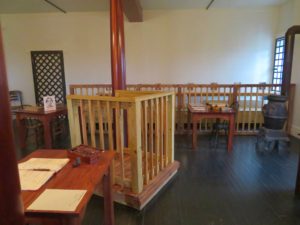
Photo by Barbara Noe Kennedy
It may look like any other mid-19th-century courtroom, but this third-floor room in Fort Lesley J. McNair’s Grant Hall, in Washington, D.C., is like no other. For it was here, between May and July 1865, that eight co-conspirators in Abraham Lincoln’s assassination–including a woman–were tried and convicted, and four were sentenced to death by hanging.
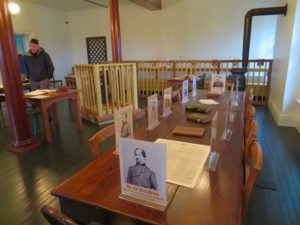
Photo by Barbara Noe Kennedy
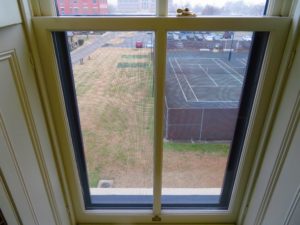
Photo by Barbara Noe Kennedy
Grant Hall, a plain-looking building standing about a block from Washington Channel, served as a wing of the federal penitentiary between 1831 and 1869 –and it’s all that remains of the original penitentiary. It was here that the Lincoln conspirators were imprisoned, and here, on the third floor, that they were tried. Today, the Defense Department’s Africa Center for Strategic Studies occupies the building. We passed the front desk and walked up two flights of wooden stairs. The last little flight of steps led to a door, which we entered. And there, before us, stood the partially re-created courtroom.
“During the trial, on some occasions, 300 people packed this room,” said Ben. The maximum occupancy set by the fire marshal today is 49.
“The nine judges of the military tribunal sat at the table on the right and the accused sat along the back wall, behind a wooden railing, each guarded by a soldier,” he said.
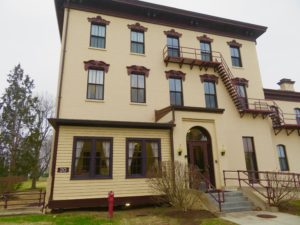
Photo by Barbara Noe Kennedy
There was also a wooden witness stand between the judge’s table and the accused, plus tiered benches for spectators off to the left. Accredited media and court stenographers occupied the long table adjacent to the witness stand. Period photos indicate where the judges, prosecutors, and defendants sat.
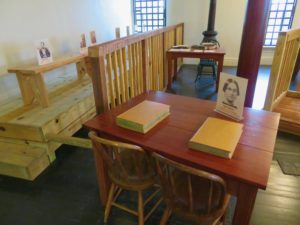
Photo by Barbara Noe Kennedy
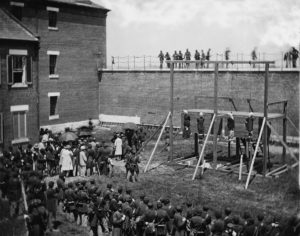
BGES intends to return the courtroom to as original a state as it can.
“BGES plans to purchase furniture–or arrange to have it made–including chairs, tables, and benches where the tribunal, press, and spectators sat,” said Ben. “We’ll also create informational brochures plus seven new signs to interpret the trial of the Lincoln Assassination as well as Fort McNair.”
There also are two rooms of trial-related exhibits. Ben ushered me to the window in one of the rooms. “See, that’s where the gallows stood, along the tennis courts,” he said.
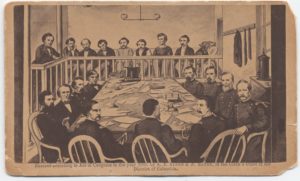
I peered down at the grassy space in between the courts and the parking lot, imagining the scene. On that fateful, blazing hot July day, in front of 300 spectators, Powell, Herold, Atzerodt, and Surratt were led to what was then the prison yard of the penitentiary. Many believed that Surratt–the first woman sentenced to execution by the federal government–would be saved, but at 1:25 PM that day, the trap doors opened and all four fell. The bodies were buried right there and remained in the courtyard until 1867, when the remainder of the penitentiary was razed. The bodies were returned to families in 1869.
“We’ll have pipes in the ground there, to hold temporary signs during tours,” said Ben. There’s no need to permanently memorialize the falling place of traitors.
Currently, tours are held on the first Saturday of the second month of every quarter, between 10 am and 4 pm. BGES hopes to finish the restoration by fall 2019.
